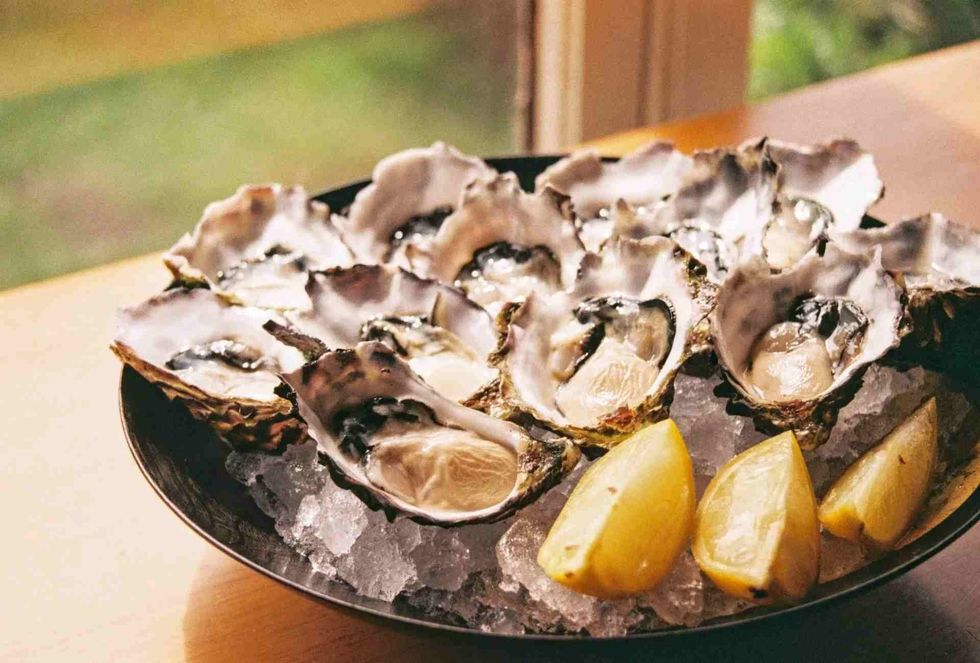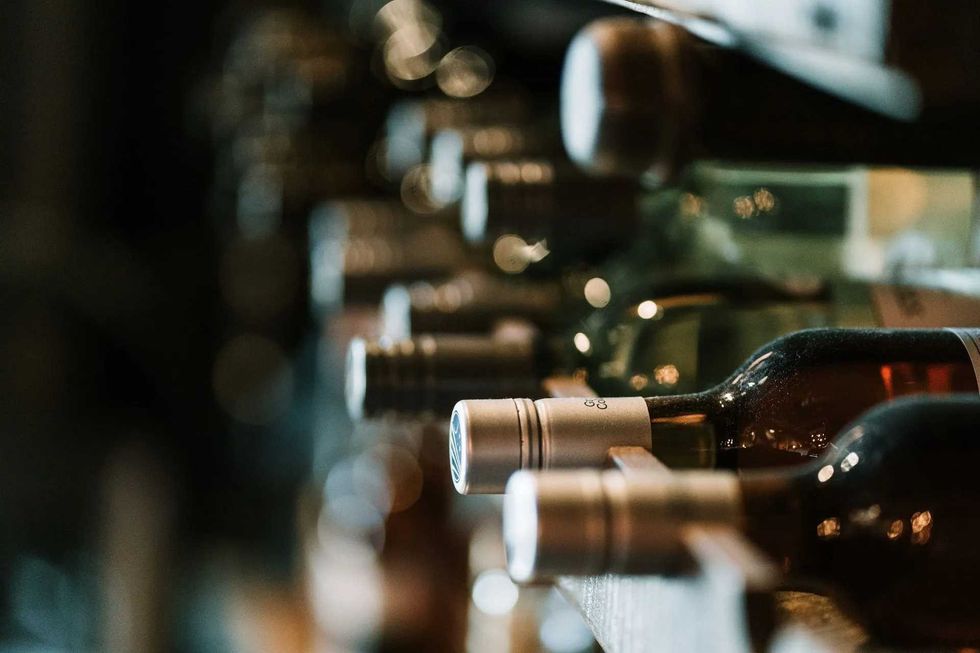51 Delicious French Cuisine Facts: Learn About The French Style Of Cooking

Besides being known for its magnificent landscapes, romantic cities, and wine, France also produces some of the best dishes in the world.
French cuisine is well renowned for its variety and it has been a large influence in the culinary world. Many of the dishes you consume today owe their recipes and names to France.
The French love their food as much as they like their wine. French cuisine is considered an art form and rightly so, the sheer brilliance that is employed in the making of French food is a treat to watch.
French gastronomy has produced some of the best chefs who can whip up a French meal at the drop of a hat.
French culture considers the presentation of food as important as its taste.
You might find French chefs take a long time to prepare your food, but when the dish arrives, you can do nothing but gaze for the first few minutes as the presentation is so amazing. It's actually considered rude to say 'Bon Appétit' in France as it degrades the value of French food in terms of refinement.
The French eat not only to satisfy their hunger but it's also considered a pleasure to have food. You may come across people who eat throughout the whole day, but curiously, the nation has one of the lowest rates of heart disease in the world.
The French usually have small bites and eat small amounts, and also sip wine before and after meals.
If you enjoy reading about French cuisine, you can't miss out on some amazing articles on French economy facts and French education system facts.
What is French cuisine?
There are several French cooking methods and traditional meals which are unique to France. There are several meals that have become synonymous with French gastronomy, such as ratatouille and coq au vin.
An integral part of traditional French cooking is the concept of 'mise en place' which means ‘everything in its place’. This involves setting up of the kitchen before starting to cook, along with being organized and prepared is what mise en place comprises.
The setup might include keeping the spices nearby, cutting the ingredients and portioning them, and placing the necessary tools within reach that will be required for the cooking process.
A popular cooking method used in France is braising. A covered pot is used to cook the food on low heat that unlocks the flavor.
Meat is most often used with this process but vegetables can also be braised. The outside layers become brown after a swift sear while the initial layer becomes a flavorful dollop of fat. A seasoned liquid is used to cook the meat for many hours over low heat.
The time depends on the type of meat cut. Some well-known french eating specialties are made using this process, such as boeuf bourguignon and coq au vin.
A cooking method without using fat is poaching. The food is submerged in a liquid and heated.
Poaching is a good method for cooking delicate foods like meat, fish, egg, fruit, and vegetables. A variant of poaching is sous-vide that involves sealing up the proteins inside a plastic bag and then cooking it for a fixed duration in temperature-controlled water.
In the broiling method of cooking, the food is directly exposed to radiant heat. The method stands as a contrast to roasting and baking in which the food is cooked by passing indirect hot air to it.
The broiling method employs high heat which cooks the food surface quickly. The crisp crust of Gruyere on the top of a French onion soup is made using broiling.
You may know that alcohol has flammable properties, but have you heard about 'flambéing'? This is a cooking method used frequently in desserts.
A pan liquid or sauce is heated to high temperatures. The liquid ignites the alcohol, burning off the matter in moments, leaving behind the dominant flavor only. Bananas Foster, a dish known to Americans, is made with this technique.
Can you make healthy French cuisine?
When people think about French cuisine, they have a notion that the food is full of fat and calories. This is not true at all. French gastronomy has much more to offer than duck confit and buttery croissants.
The inclusion of fresh fruits and vegetables, as well as lean meat, is a highlight of French food. You can cook a traditional French dinner and make it healthy by a simple process of substitutions and omissions.
Instead of butter, you can use healthy oils such as grape seed and olive. Using heavy cream is not healthy for some people, so you can use Greek yogurt or reduced-fat milk instead of cream. You can enjoy a delicious meal without losing a healthy lifestyle by swapping out some simple ingredients.
In France, you may come across the terms such as digestifs and apéritifs. These are alcoholic beverages that French people drink before starting their meal and after they finish their meal. Apéritifs are served before eating as a sort of appetizer while people eat digestifs after a French meal in order to help digestion.
What is the French traditional cuisine?
There are a number of dishes that form a part of the French culture. Throughout history, the French diet has undergone massive changes to become what it is today.
Some of the dishes known as ‘traditional family fare’ form a part of the national storehouse. These include dishes like roast lamb leg or gigot d'agneau, country-style pate or pâté de campagne, vinaigrette, and boiled beef dinner or pot-au-feu.
These items form a part of the main course in most French houses across the length and breadth of the country.
Some French food items are found only in specific regions in the country. These dishes use ingredients that are specific to those regions. Some examples of these dishes include buckwheat pancakes or galettes de sarrasin, in Brittany, fish soup or soupe de poissons in Provence and sauerkraut or choucroute in Alsace.
The third group of dishes is haute cuisine tradition, which translates to high cooking and is typically small portions presented beautifully.
The best French chefs prepare haute cuisine and with tastes evolving over the years and culinary trends changing haute cuisine is constantly adapting.
A few of the dishes which might fall under this category include Tournedos Rossini (beef tenderloin that has been topped with foie gras), Peche Melba (peaches and vanilla ice cream with raspberry sauce), and fish pate (terrine de poissons).
All of these items can be attributed to some specific time in French culinary history.
It has to be said that these various cuisines are not always mutually exclusive. Louis de Bechamel created the Bechamel sauce that became a part of the 18th-century repertoire.
This also became a mainstay in later stages like the 19th century and early 20th century in a period when the dishes were a part of the cuisine Classique. You may come across these dishes in local households rather than in modern restaurants.
A dish that has changed from being a local dish to being a traditional family dish is boeuf bourguignon.
Fattened duck steaks or magret de canard is a specialty in the southwest region of France. It has been adopted by modern creative chefs.
It must be mentioned that you are more likely to see elaborate French items than regional or traditional ones in worldwide eateries. Outside France, only a number of regional French delicacies are known including foie gras and cassoulet.
But these are most of the time misinterpreted and misunderstood. What the outside world knows as French food has come from the creative mind of chefs.
The reputation that French cuisine has garnered with the various types of dishes are not traditional dishes that every day French people eat. Some of these are old-fashioned and dated like the Bechamel, sauce bearnaise, and crepes Suzettes while some are contemporary such as tropical fruit sorbets, sorrel sauce, and flourless chocolate cakes.

What is popular French cuisine?
France consists of so many French delicacies that the cuisine of the nation has piqued the interest of people all over the globe. Let us now look at some interesting French food facts that every food lover would like to know.
Frites or French fries are actually not French at all. They are a Belgian invention.
During World War I, the American and British soldiers stationed in Belgium were introduced to thin strips of deep-fried potatoes. The Belgian people spoke French and hence when these soldiers returned home, they told everyone about the ‘French fries’ they had eaten. This term got stuck and people continue to use it even today.
Do you know that even French toast is not actually French? The origins of French toast go back to the age of the Roman Empire although the phrase ‘French toast’ was coined in England in the 17th century.
It is called ‘pain perdu’ in France which is a French word for ‘lost bread’. This is because stale bread was traditionally used to make this dish, as French people don't like to waste any food.
Croissants and traditional baguette are synonymous with the French bakery scene. But both of these French delicacies were invented by an Austrian entrepreneur, August Zang. The French people love a la baguette.
It is the most popular French bread. As a result, you might come across the la baguette vending machines in the country which can dispense bread any time of the day.
Many restaurants in Paris can be seen serving baguettes to customers without any charge. There are two versions of the baguette available, thin and fat. The thinner version is known as ficelle whereas the fatter is called a flute and is almost twice as large as the traditional baguette.
In France, breakfast is known as le petit déjeuner that means ‘the little lunch’. During breakfast time, the people dunk chocolate croissant or pain au chocolat into a glass of milk or hot chocolate.
A curious habit in France is that morning coffee is drunk from a bowl so that the bread can be dunked into it. In other countries, people typically drink hot chocolate later in the day or just before bed.
France produces many different desserts. And while French desserts may comprise many delicious dishes, most local French people prefer having fruit and French cheese after a meal.
One of the most interesting French food facts is that France produces more than 1,500 types of French cheese. It is a huge part of the cuisine. Many regions in France make their own cheese.
The creation of blue cheese was by accident. A French boy was eating bread along with ewes milk cheese when he left his food in a cave, seeing a beautiful girl. After he came back many months later, the cheese had changed into what we now call the Roquefort.
The well-known le croque-monsieur consists of a hot grilled cheese and ham sandwich. If a poached egg is put on top, it would be called un croque-madame. Some people say that this is the French version of a grilled cheese.
The French dislike using ketchup with everything, unlike a lot of Americans. French children are banned from bringing ketchup to school. This ban has been in place since 2011.
During Christmas, French people eat a lot of seafood and a typical Christmas menu consists of raw oysters, scallops, smoked salmon, foie gras, and escargots. This is just a small part of the French Christmas menu. It also includes several meat dishes, cheese and of course, the best wines!
A paste of fish, meat, or vegetables is known as le pâté which is called la terrine if made in a ceramic dish.
Pancake or la crepe is the French term for pancake. It might be savory or sweet. Suzanne Reichenberg, a French actress, gave her name to a version of pancake that is known as la crepe Suzette.
When McDonald's opened its branch in France in 1992, the French people vehemently protested loudly. But people and French children could be seen lining up in a queue outside Burger King when it returned in 2016. Nowadays, it is common to see burgers on café menus.
The Oldest French Cuisine
It is a well-established fact that French cuisine has rightly earned its place in the history books of fine dining. The history of the cuisine goes back several centuries to medieval times.
The refined complexity found in the food enjoyed by the French people can be traced to the Middle Age.
French cuisine shared a cultural taste with Moorish food and historians say that during this time, the whole meal was served together at once. Known as ‘service en confusion’, the main course meals were made up of spiced pork, fish, poultry, and beef.
It is believed that Catherine De Medici was a major character in the history of French food by introducing the French people to Italian cuisine.
Hailing from Florence in Italy, Catherine married France’s King Henry II who ruled the nation in the middle of the 16th century. After she got married, an Italian chef from her hometown accompanied her, who is said to have had a profound influence on sophisticating French dishes.
This is known to be a myth because the food in France was already sophisticated in its own right, beginning with Platine in 1505.
The entire French food industry went through a massive overhaul after the French Revolution. This happened due to the replacement of the food items.
The French guilds had previously prohibited the chefs from selling and using some specific types of food. The fall of the guilds made ingredients available on a large scale.
Marie-Antoine Carême was one of the most renowned chefs of this age. She developed base sauces of a standard palette which were known by the name of ‘mother sauces.’ These sauces made use of ingredients like v elouté, bechamel and espagnole.
Georges Auguste Escoffier was a pivotal culinary writer, chef and he also owned a number of French restaurants. During the transitionary period between the 19th century and 20th century, Escoffier added modern touches to popular cooking techniques of France which were well received by the people.
He made simplified versions of Carême’s recipes and divided the kitchen into five sections. As a result, he was a pioneer in the development of kitchen organization.
Have you heard the term ‘French paradox?’ This tells us that while the French love to eat and enjoy heavy meals which are full of butter and fat, the people have one of the lowest rates of heart diseases in the world. Other countries might feel jealous, but the secret to this paradox is said to be French wine.
Many French people believe that it keeps them healthier than all the other nations.
Here at Kidadl, we have carefully created lots of interesting family-friendly facts for everyone to enjoy! If you liked our suggestions for 51 delicious French cuisine facts: explore details on French style of cooking, then why not take a look at Colombian food facts or Brazilian food facts?
We Want Your Photos!
More for You
See All
Bachelor of Science specializing in Mass Communication.

Adekunle Olanrewaju JasonBachelor of Science specializing in Mass Communication.
Disclaimer
1) Kidadl is independent and to make our service free to you the reader we are supported by advertising. We hope you love our recommendations for products and services! What we suggest is selected independently by the Kidadl team. If you purchase using the Buy Now button we may earn a small commission. This does not influence our choices. Prices are correct and items are available at the time the article was published but we cannot guarantee that on the time of reading. Please note that Kidadl is a participant in the Amazon Services LLC Associates Program, an affiliate advertising program designed to provide a means for sites to earn advertising fees by advertising and linking to Amazon. We also link to other websites, but are not responsible for their content.
2) At Kidadl, we strive to recommend the very best activities and events. We will always aim to give you accurate information at the date of publication - however, information does change, so it’s important you do your own research, double-check and make the decision that is right for your family. We recognise that not all activities and ideas are appropriate for all children and families or in all circumstances. Our recommended activities are based on age but these are a guide. We recommend that these ideas are used as inspiration, that ideas are undertaken with appropriate adult supervision, and that each adult uses their own discretion and knowledge of their children to consider the safety and suitability. Kidadl cannot accept liability for the execution of these ideas, and parental supervision is advised at all times, as safety is paramount. Anyone using the information provided by Kidadl does so at their own risk and we can not accept liability if things go wrong.
3) Because we are an educational resource, we have quotes and facts about a range of historical and modern figures. We do not endorse the actions of or rhetoric of all the people included in these collections, but we think they are important for growing minds to learn about under the guidance of parents or guardians.







